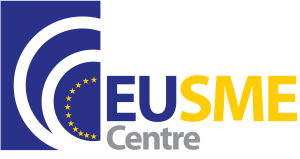 The Chinese market has seen many changes in 2016, opening up new opportunities for European small businesses while demanding even more advanced local knowledge and experience.
The Chinese market has seen many changes in 2016, opening up new opportunities for European small businesses while demanding even more advanced local knowledge and experience.
In this article, China experts at the EU SME Centre review the key changes that affected European SMEs in 2016, and share advice on how to better prepare for the future.
Meet the experts
What are the key market trends that you think European small businesses should be aware of?
Despite the many changes taking place in the global socio-economic environment European companies remained, confident of the long-term prospects in China. The GDP growth rate is slowing, of course, from the double-digits of the past to the recent 6.7 per cent, and in the near future this looks set to decrease further to around five per cent. The change emphasises China’s aspirations to restructure its economy – moving from investment and export orientated growth, to an environment where domestic consumption, increased productivity and innovation are the key drivers. This transition will bring with it the potential for greater opportunities for European businesses contemplating the market. The three top trends for 2017 that I would highlight are:
Moving up the value chain
China is striving to move its industrial processes up the value chain; looking to automatise and informatise its supply chains so that its goods can be produced more efficiently. Hand-in-hand with this move will be China’s hunger for technology required to make the change – from industry robotics, transportation equipment, to agri-equipment and their related services, there will be opportunities for EU SMEs.
Growing domestic consumption
China’s ‘new normal’ recognises that domestic consumption will play a larger role in the economy. Meanwhile, Chinese consumers, driven by the fast growing middle class, crave more goods from the EU. Small EU businesses should be particularly aware of the rapid growth of e-commerce platforms in China which has diversified the entry modes to the country, providing them with more channels to sell to the market.
Chinese outbound investment
The trend of increasing Chinese outbound investments is another key change. Spurred on by policies such as ‘One Belt One Road’, Chinese companies will increasingly be encouraged to venture outside the mainland to export and invest abroad. European businesses should grab the opportunities to service these new Chinese investors and, more importantly, to build the relationships with them on which long-term, successful business can be sustained.
 Ludmila Hyklova, Legal Advisor
Ludmila Hyklova, Legal Advisor
What was the one key legal update for European SMEs in 2016 in terms of doing business with or in China?
China’s foreign investment administration reform. Starting from October 2016, foreign companies setting up a company in China in the industry sector—provided its activities are not in the category of restricted or prohibited according to the Foreign Investment Guidance Catalogue or other regulations—no longer need to apply for prior approval from the Ministry of Commerce (MOFCOM). The reform applies to both traditional wholly foreign-owned enterprises (WFOEs), Sino-foreign equity joint ventures (EJVs) and cooperative joint ventures (CJVs), and those invested in by foreign-funded investment enterprises in China. The filing process also applies to changes within current foreign-invested enterprises (FIEs).
This new regulation is another step in the foreign investment reform that started in several free trade zones some time ago, which aims to simplify procedures by replacing former approval requirements with filing. However, the pool of industries and activities in the category still requiring MOFCOM prior-approval is not small.
What would be your top advice for FIEs in China this year?
Understand how this reform affects your business when it comes to set up and company reporting. It is crucial that companies keep themselves aware of these significant steps. The Chinese Government continues to take measures aimed at attracting foreign investors while still maintaining high market access standards in certain sectors.
 Rafael Jimenez, Business Development Advisor
Rafael Jimenez, Business Development Advisor
What was the most important update for European SMEs in 2016 in terms of doing business with or in China?
Cross border e-commerce (CBEC). In April, the Chinese Government made a number of significant amendments to the regulation of CBEC in the country, including a new tax policy and a list of products authorised to be imported via CBEC. Both amendments can affect all participants in the supply chain of imported products through CBEC into China, from suppliers and traders in the EU, to online platforms registered to trade with imported products via CBEC.
What do you think the biggest market challenge is for European SMEs?
The major challenge for SMEs now is to understand that success in China requires much more granularity. From now on SMEs need to manage a scale or level of detail much deeper in identifying the opportunities.
What would be your top advice this year for European SMEs interested in the Chinese market?
They need to segment their targeted market more carefully. Product category no longer defines an opportunity. It has to be mapped out beforehand in terms of cities, sales channels, target consumers, pricing, distribution, types of retailer, types of partner, and sub segments for each of these criteria. There are a growing number of opportunities—that’s the bright side for SMEs—and we remain positive.
 Martina Gerst, Market Access Advisor
Martina Gerst, Market Access Advisor
What changed the most for European SMEs in 2016 in terms of market access?
The implementation of China’s new Food Safety Law (NFSL). China has been implementing this new law for over a year, which is recognised as the country’s strictest food safety law by far. It is important for European companies in the food and beverage (F&B) sector to keep a close eye on its implementation and understand how to comply with it to avoid unnecessary problems.
What would be your top advice this year for European SMEs in the F&B sector?
Compliance is essential. You must immediately face all legal aspects required in China, not grope in the dark with the hope that everything will be alright. To ensure compliance you may want to establish a special China food safety team, ideally consisting of members from the legal, food technology, product management and quality assurance departments before exporting.
Establishing a specific internal Chinese food safety working procedure as a reference for employees involved in various stages of handling a food safety issue is also useful, as is keeping organised written records for all activities. Investigation dossiers should include written records such as correspondence, meeting minutes, testing reports, findings of investigations, conclusions reached by the investigation team and corrective measures, if any, that have been taken.
Close attention should also be paid to legal updates. Different authorities, or even individual officers, often have different interpretations of the regulations. Being accurately informed of legal and regulatory updates in China is crucial for your business success here.
Finally, you should monitor different enforcement levels and local regulations across the country. While the central government has published, or is drafting, regulations to enforce the NFSL, local governments are also actively developing new implementing rules. You can expect tighter control and inspection in some cities (e.g. Beijing) while others could still delay the application of the new rules or enforce them in a more relaxed way.
Success Stories in the Chinese Market
Getting the first crate of beer from the UK to China
Lancaster Brewery is a British company producing and selling a variety of beer products. It entered the Chinese market in July 2016, successfully reaching the country and clearing customs in less than a month. It is targeting Guangdong Province to start with but plans to expand business in other first-tier cities in the near future.
Lancaster Brewery is currently exporting to China with the assistance of a local Chinese business partner who handles the process of customs clearance and relabelling in bonded warehouses. The company also plans to send an employee to Guangzhou for a period of six months to represent the brand in the market, provide support to the partner and develop a network of distribution channels.
During their market research process, Lancaster Brewery came across the EU SME Centre’s content online. The information helped the company better understand the technicalities of exporting products to China and to clarify the requirements for labelling, customs procedures and intellectual property protection in China. “The Alcoholic Drinks Market in China webinar, held on May 10th, provided me with crucial data to pitch the China opportunity to our company board and win their approval,” says Giulia Ravasi, International Export Manager.
As advice for other European businesses interested in the Chinese market, Ravasi emphasises the importance of establishing trusted relationships with Chinese business partners, doing market research and the willingness to seek help.
Accessing China’s Fashion Market
Just Campagne is a family-run business based in France, designing and making 100% hand-made leather bags and accessories. With three boutiques already in France, the company is now looking to develop in the Asian market, particularly China.
In their early days in China, they carried out a market study in Beijing by organising private events for potential clients to show them their products. The feedback they received afterwards was very positive and encouraging.
Célia Berkouk, Head of Marketing and Sales at Just Campagne, first heard about the EU SME Centre during an event organised by a Beijing-based women’s professional network. After discussing the Chinese fashion industry with Rafael Jimenez, the Centre’s Business Development Expert, Berkouk very quickly got the advice she needed to get started.
China is a high potential market for Just Campagne, because customers are in search for niche and exclusive products with great quality and service. “They fully understood that our product category is not aimed at the mass-market,” says Berkouk.
Understanding payment methods of Chinese travellers and daigou was also very useful for Berkouk. Just Campagne adopted Chinese payment methods for developing brand awareness for Chinese people travelling abroad and visiting one of their stores in France. All the boutiques accept UnionPay and the ones in Paris accept AliPay as well.
No less important was the insistence on registering the company’s trademark in China. Early on, the Centre referred Berkouk to the China IPR SME Helpdesk to seek advice on trademarks.
The EU SME Centre in Beijing provides a comprehensive range of hands-on support services to European small and medium-sized enterprises (SMEs), getting them ready to do business in China.
Our team of experts provides advice and support in four areas – business development, law, standards and conformity and human resources. Collaborating with external experts worldwide, the Centre converts valuable knowledge and experience into practical business tools and services easily accessible online. From first-line advice to in-depth technical solutions, we offer services through Knowledge Centre, Advice Centre, Training Centre, SME Advocacy Platform and Hot-Desks.
 The Centre is funded by the European Union and implemented by a consortium of six partners – the China-Britain Business Council, the Benelux Chamber of Commerce, the China-Italy Chamber of Commerce, the French Chamber of Commerce in China, the EUROCHAMBRES, and the European Union Chamber of Commerce in China.
The Centre is funded by the European Union and implemented by a consortium of six partners – the China-Britain Business Council, the Benelux Chamber of Commerce, the China-Italy Chamber of Commerce, the French Chamber of Commerce in China, the EUROCHAMBRES, and the European Union Chamber of Commerce in China.
To learn more about the Centre, visit the website.



One comment on “Opportunities and Challenges for EU SMEs”